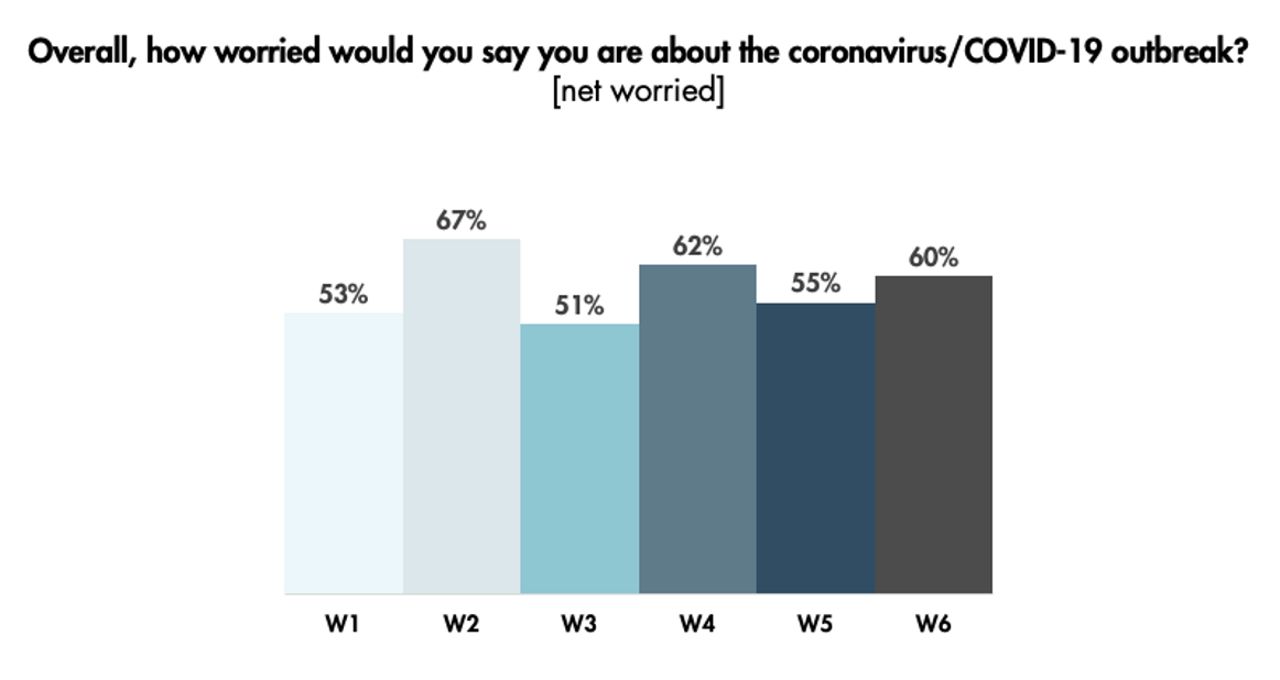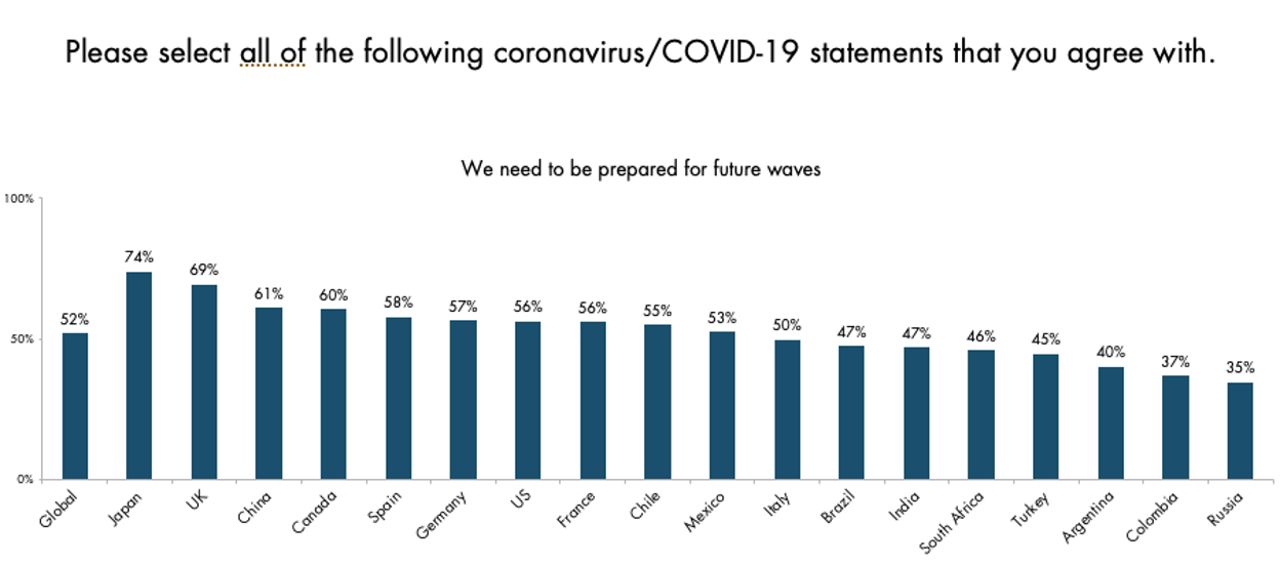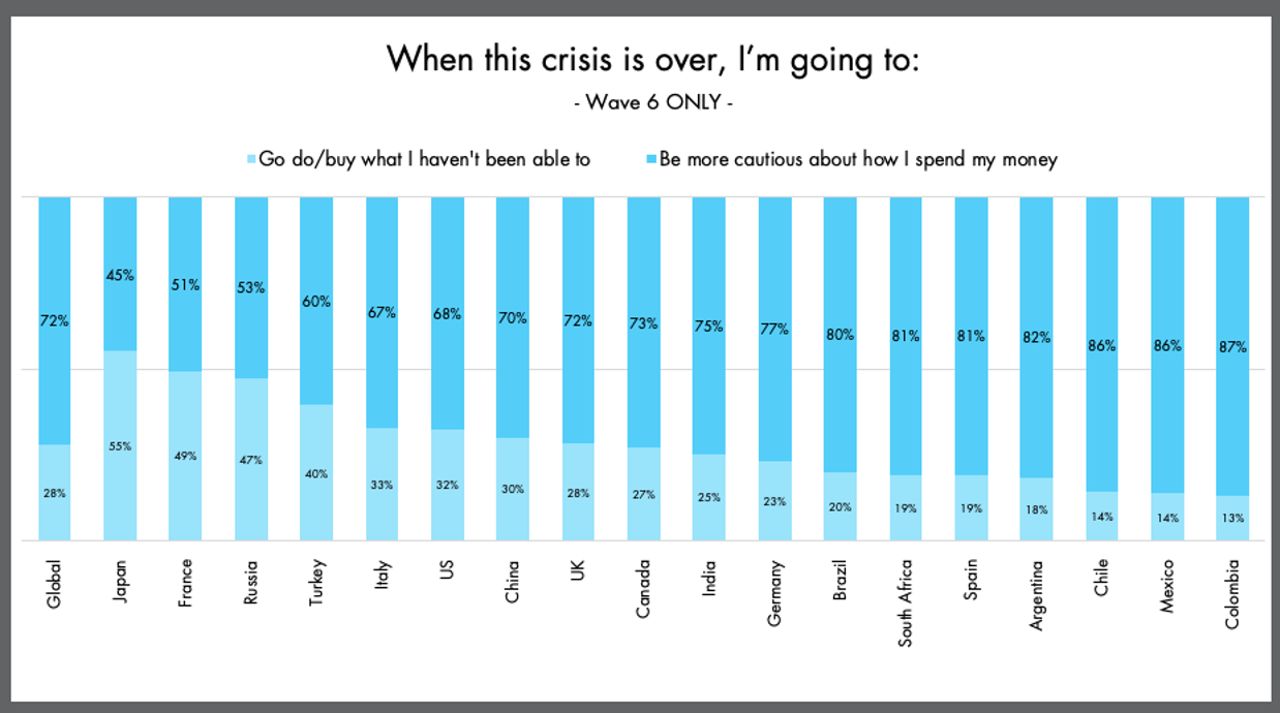While we move closer to the containment of infection rates in many parts of the world, there are early and possibly premature indicators of recovery, from the signage of businesses that have re-opened to crowds returning to public spaces.
“We’re back”, “welcome home”, “we missed you” - these businesses and individuals announce – sometimes with inspiring messaging. These efforts are reminiscent of the earliest days of the pandemic when a global lexicon for the Covid-19 pandemic first emerged with phrases, like “in times like these”, “unprecedented”, “the new normal”, and “build back better”.
Our global status quo for the foreseeable future will be one of loosening and tightening of restrictions, outbreak and containment, and hope and worry.
Now, like in those early days, marketers need to be wary of trading the dynamism and complexity of these circumstances for platitudes and formulas. No one is really ‘back’ – and if they are, it is a percentage of their earlier trading. To claim that we have stepped onto the “road to recovery” fails to recognise that we are solidly in a state of deep adaptation.
As we are increasingly aware, our global status quo for the foreseeable future will be one of loosening and tightening of restrictions, outbreak and containment, and hope and worry. In fact, when we look at data that we’ve gathered since early April 2020, we can see that the world is balancing relative confidence against resurgent worries with an inability to dispel the uncertainty that the pandemic has catalysed.

Above: Comparative views from global respondents across six waves of the ongoing study, Truth about Culture and Covid research.
At MW Truth Central, we have developed an approach that draws from anthropological studies of cultures across the world and over time. This model suggests that in any crisis, recovery is only possible when the disruption that catalysed the crisis has been adequately addressed.
What is clear is that the pandemic is not a singular event, but rather has exposed the intersection of four social crises: a public health crisis, an economic crisis, a political crisis, and a psychological crisis.
Until then we will remain fixedly in a liminal state of adaptation, especially in view of the fluctuations in infection rates, market activity, and social volatility.
Indeed, 52% of the world’s people say that it is essential that we prepare now for future waves, rising to nearly ¾ people in Japan and the UK.

What is clear is that the pandemic is not a singular event, but rather has exposed the intersection of four social crises: a public health crisis, an economic crisis, a political crisis, and a psychological crisis. At times, these crises are convergent; for example, ethnic minorities in many countries face an increased risk of suffering and dying from the virus than their national peers. In this case, the public health crisis converges with the political and economic crises facing ethnic minorities. At others, they are divergent, and resources and efforts are confounded and splintered rendering the success of actions more difficult to fulfil. We have witnessed this divergence in the case of countries that have prioritised the economic crisis over the public health crisis, for instance.
Even in countries that are re-opening, there is a general worry about what the long-term scenario might be.
Ultimately, this convergence of crises is a call to accept that there is no yellow brick road to recovery. In our first wave of research, one third of people globally (31%) and 51% in the UK believe that ‘we are opening society too quickly’; more recently, in the UK this has dropped to 39%. It should be no surprise that countries that went into lockdown earlier are less likely to agree with this, as is the case in China (16%), Italy (22%), and France (22%). However, countries like the US have seen the opposite trend with Americans now expressing the greatest level of agreement (47%) with this belief.
Even in those countries that are re-opening, there is a general worry about what the long-term scenario might be. When weighing the relative importance of doing/buying what has been out of reach throughout the duration of the crisis to being more cautious about spending money, 72% of the global population leans towards caution. Perhaps most surprising is the fact that Germany – a country that has shown paragon skill navigating the crisis – expresses more rather than less caution when it comes to reopening. After an extended period of deprivation, consumer confidence remains fragile and volatile.

The Covid Culture Factor – Five principles for brands
So, what does this mean for brands? First, it requires acceptance of a protracted period of adaptation. Second, it requires the deployment of robust cultural frameworks to break away from the risk of sinking into a sea of sameness.
Learn from countries that are ahead of you in the pandemic journey.
There is ample evidence that these countries offer inspiration in terms of triumphs and failures. If you haven’t done so already, assemble a multinational community of advisers that will provide indicators of what’s to come and what has been.
Look to other disciplines for inspiration and collaboration.
Germany’s current success is an exception rather than the rule. The country’s Covid19 advisory panel was assembled of experts from diverse disciplines – social scientists, historians, public health experts, healthcare professionals and business and political leaders. A holistic crisis of this calibre will not be solved by any one discipline or field of expertise.
At each phase of this crisis, we have been witnesses to a sea of sameness when it comes to messaging.
Commit to reinforcing human truths in a locally relevant way.
We call this ‘deep globality’ – a principle that understands that although love, success, connection, discovery, and purpose are integral to the universal human experience, these truths are expressed and interpreted in locally nuanced ways. Referring to individual purpose is a dog whistle for Americans but doesn’t resonate as deeply with Chinese audiences.
Level up on linguistics.
At each phase of this crisis, we have been witnesses to a sea of sameness when it comes to messaging. With few exceptions, we have universally settled on catchphrases (‘We’re in this together’, ‘We’re here for you’, ‘We’re back’) that are not working hard enough to connect with audiences meaningfully. Delivering targeted, culturally conscious, and even inventive messaging is crucial.
Show don’t tell.
Take inspiration from the meme playbook. A recent example comes by way of the actors Mindy Kaling and Reese Wetherspoon who have recently chronicled their year in review to great comic effect. Show your brand’s journey through the crisis so far.
With brands having lost far less trust than governments, media, and even fellow citizens, this is not the time to take that privilege for granted by defaulting to formulaic messaging, political rhetoric or statistical language – there’s plenty of that elsewhere.
)




 + membership
+ membership








